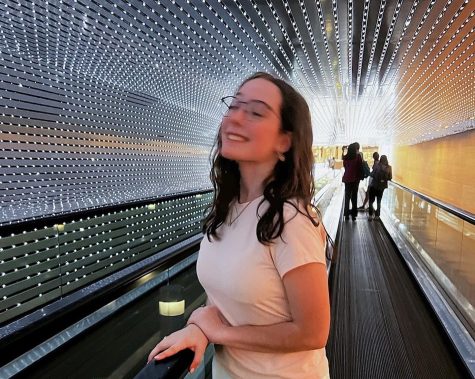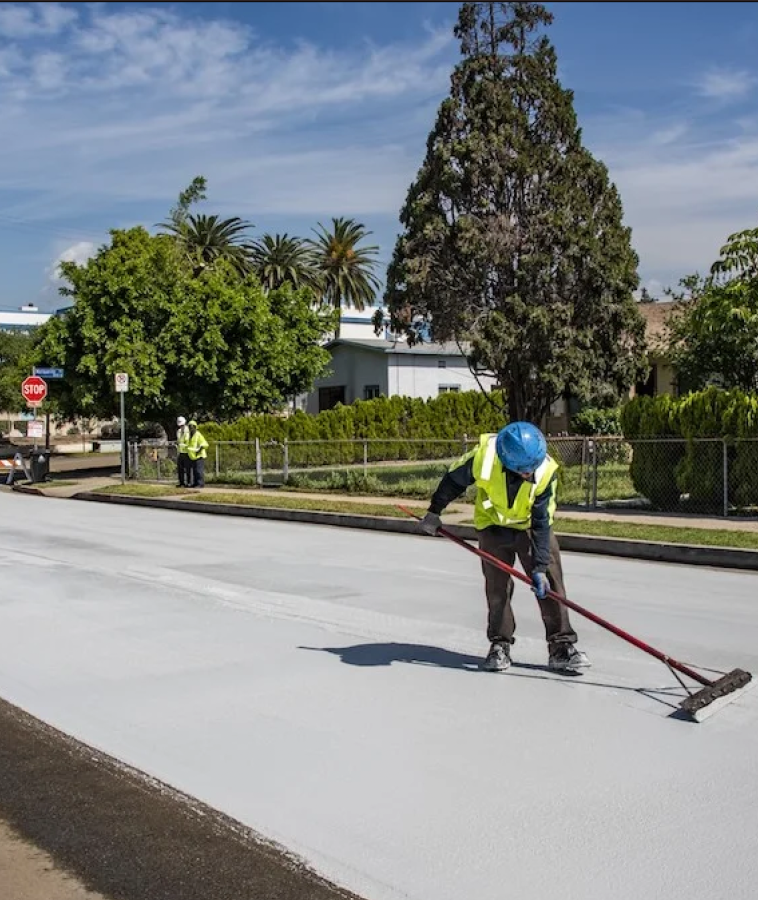To battle the heat waves, Phoenix, Arizona is painting their streets a lighter color
Road construction workers applying the light-colored sealant on city streets.
The videos circulate on social media every year: Arizona residents frying eggs in their driveways due to the ultimate heat index of it.
Despite the fact that Arizona is located in the desert, I am still surprised when they come back ten minutes later—funny enough—and find the egg fully cooked in the pan.
The magic of really hot heat.
To cook an egg in that time, just by leaving it in the driveway, is insane to me, given that usually, it will take me that amount of time to completely cook them using a gas stove. However, people in some areas are cooking food in a pan on a regular blacktop, which is great for internet content, but not for yourself personally.
Again, Arizona is located in the desert, so it’s realistic that anything can cook on scalding-hot pavement, but the temperature is starting to affect people more and more every year, particularly the homeless; the American southwest is feeling an increase in their already abhorrent heat.
Blacktop, or any road, asphalt, and driveway, for that matter, can climb to 180 degrees Fahrenheit in temperature. Already, we’re seeing an increase in temperature on a global scale, but areas like the desert are seeing more serious effects compared to other areas.
Narrowing down on the issue of rising temperatures, a lot of what we have familiarized ourselves with as being “normal temperatures” will continue to critically change with each passing year.
Americans are expected to see their electric bill increase by 20% over the span of summer 2022-23; however, not being able to afford electric bills has become more common due to the constant need for air conditioning as an escape from the climate.
Heat waves are withstanding their longevity and vigor according to a research blog by Vermont Law. In return, air conditioning has become more of a necessity when the thermometer exceeds 110 degrees Fahrenheit for some, but to me, anything above 85 degrees is too hot to handle.
The homeless stand alone in these heat waves. In 2020, 40% of Phoenix’s days saw temperatures reaching over 100 degrees, and in that same year, Maricopa County reported 323 heat-related deaths.
Of course, there are ways to combat global temperature rise, but seen as progress is made little by little, Phoenix has begun its efforts to regulate some of these extreme temperatures.
By painting roads white or gray, it stops the direct sunlight from charging the black asphalt with concentrated heat and energy. In areas where streets have already undergone their transformation, temperatures have decreased 10-13 degrees, creating a better environment for the homeless and people living in Phoenix.
Roads and buildings absorb more solar radiation than they reflect, leaving the surrounding area sizzling as a consequence. Because dark colors soak up heat, their hot surfaces inevitably warm up and create conditions like this. Changing the color of the roads can lead drop in energy bills and the price of other necessities that accompany heat like water and shelter.
Unfortunately, videos of eggs frying in a pan might grow scarce on the internet as cities incorporate and research painting roads white, but internet content is not worth the harmful heat. In Los Angeles, California, the success of painting roads white is developing as the city plans to cover more area by 2028, and soon, curtail the power of the sun’s blaze.

For a third round, Sydney returns to write for The Central Trend as a junior. During the summer, she attended the Washington Journalism and Media Conference...



























































































